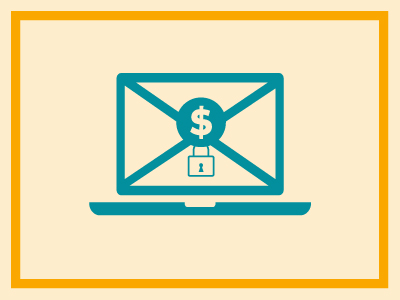How much is your data worth to your business? If you’re like most businesses today, your data is everything. Making sure you have continuous access to your data is vital to ensuring your business continues to function.
Ransomware Holds Your Data Hostage
Ransomware is a kind of malware. Rather than steal your data, ransomware encrypts your data. Since you don’t have the key to decrypt it, you can’t use your data. The ransomware then offers to sell you the decryption key, usually in untraceable bitcoin or other cryptocurrency. The ransomware typically gives you a very short time in which to respond, after which they no longer can provide the key and your data remains locked up.
It’s hard to say exactly how common ransomware is. Some reports claim it’s been increasing steadily since 2017; others claim ransomware use went down in 2018 but is expected to increase again in 2019.
Defending Against Ransomware Is Better Than Paying the Ransom
There have been some widely publicized incidents where ransomware victims had to pay the ransom, including hospitals and city governments. However, a good disaster recovery strategy can help you restore data without needing to pay the ransom. A good cybersecurity strategy can help you avoid being affected by ransomware at all.
Start by guarding the services that often present an entry point for ransomware. There have been several attacks that leveraged open Remote Desktop Protocol (RDP) as their entry point. Protect yourself by making sure servers running RDP have all their patches applied, make sure logins are unique, rather than common ones like “admin”, and prohibit common passwords, as well. You can also eliminate the need to run RDP by requiring use of a virtual private network (VPN) for remote access to company systems.
Other services that have been targeted for use by ransomware include JBoss and FTP, so apply the same kinds of protections to them.
Use antimalware software to keep dangerous software out of your network. Train your users to recognize potentially harmful attachments and scripts. Make sure systems display file extensions, so users don’t click on an executable that pretended to be a pdf file.
If ransomware does get into your network, you can limit its ability to do harm through network segmentation that limits its access to systems.
Responding to A Ransomware Attack
Your best response to a ransomware attack isn’t to pay the ransom; it’s to invoke your disaster recovery plan and restore an unencrypted copy of your data from a recent backup.
Prescient Solutions provides a complete set of services to help Chicago and Schaumburg-area businesses defend against ransomware. From cybersecurity to backup and disaster recovery, our IT consulting and managed services prepare your company for all the IT risks you face. Contact us to learn how we can help your business defend against ransomware and other threats to your IT and your business.


